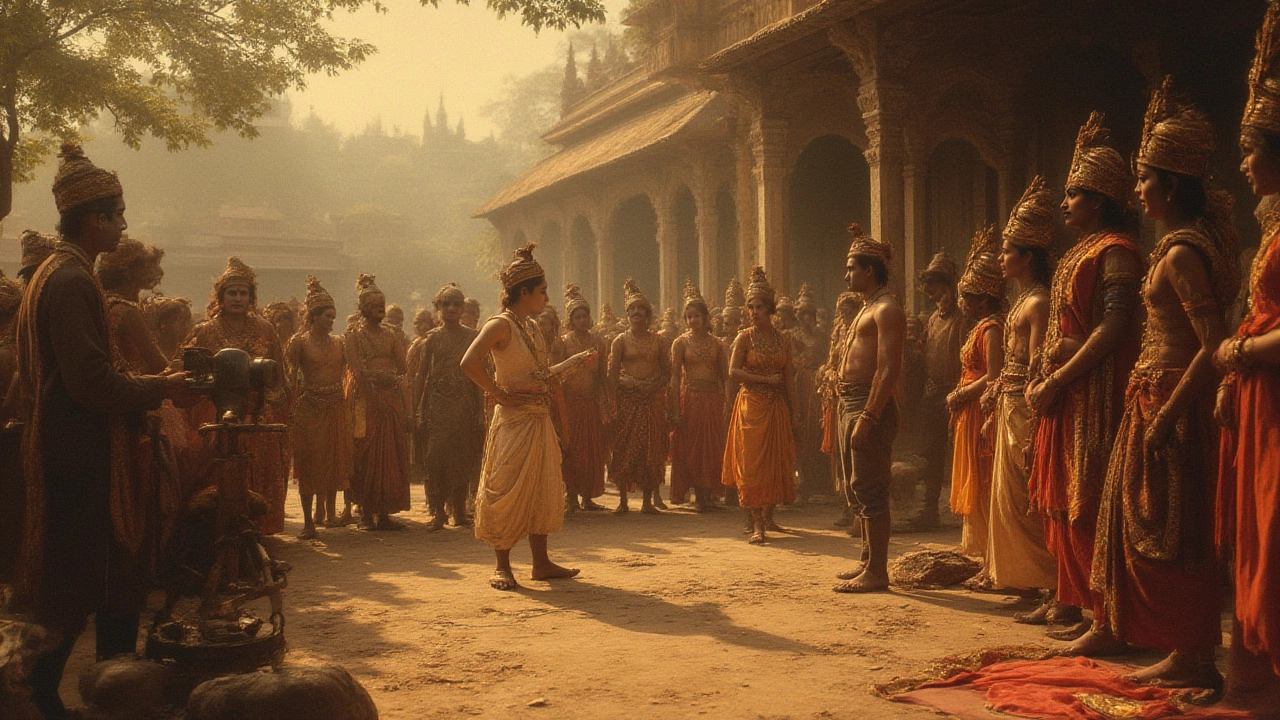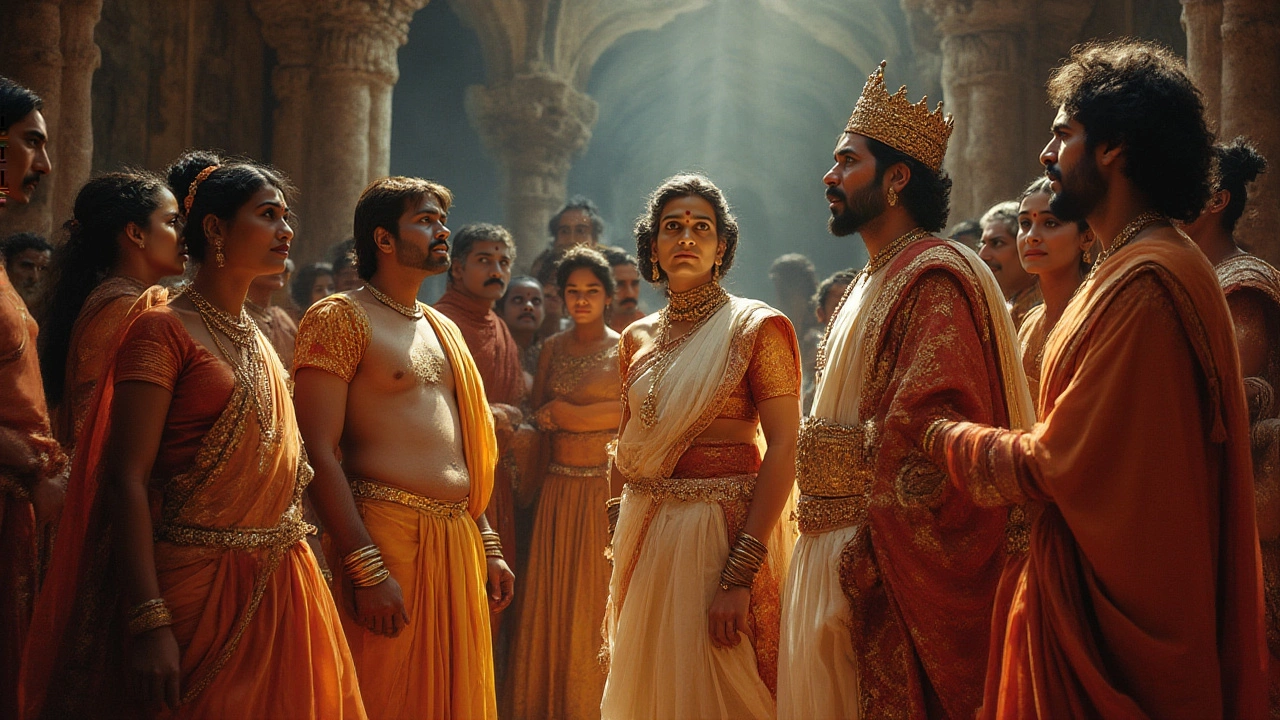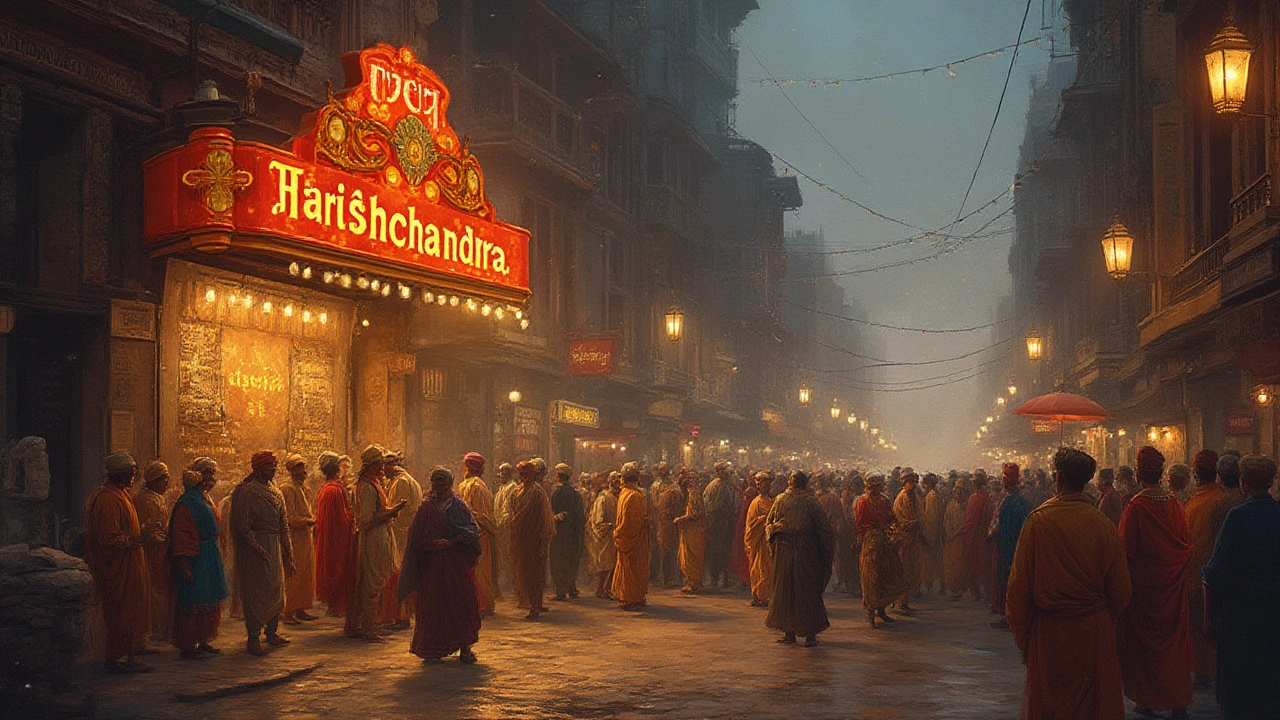India's First Famous Movie: Unveiling the Origins of Indian Cinema
 Jul, 30 2025
Jul, 30 2025
You’d think for a country as movie-obsessed as India, picking out the first famous film would be a breeze. But here’s the twist: Indian cinema didn’t begin with the glitzy dance numbers or the megastars that crowd Mumbai’s streets today. It started quietly, almost like a well-kept secret, only to become a roaring phenomenon. Over a century has gone by since that black-and-white wonder flickered to life, but people still whisper its name with respect—especially if you ever visit a proper cinema club in Mumbai or Pune.
The 1913 film ‘Raja Harishchandra’ wasn’t just India’s first full-length feature movie; it held the country together during a time of colonial uncertainty and changed how Indians saw themselves on screen. This silent, mythological film didn’t just make waves at home; it started conversations as far as London and Paris, and it etched Dadasaheb Phalke’s name as the ‘father of Indian cinema.’ So what made this movie such a big deal, and how has its influence trickled down to today’s blockbusters? Let’s dig into the celluloid.
Setting the Stage: India Before Film
Imagine 1900s India. There are no neon-lit theatres or red carpets waiting for eager fans. Most entertainment comes from live theatre shows, stories recited around oil lamps, shadow puppetry, or epic tales performed by traveling troupes. Cinema was a foreign concept—only something the British might enjoy, perhaps. The first moving pictures in India were short newsreels or travelogues, screened by European projectionists at Bombay’s Watson’s Hotel in 1896, just a year after the Lumière Brothers’ cinematic debut in Paris.
Indians, however, weren’t content being mere spectators. Photographers were already tinkering with cameras, experimenting with animated slides and short skits. But anybody thinking about a full-length feature film faced huge hurdles. Besides limited technology and funds, there was skepticism from society and pushback from family—many thought movies would corrupt traditional values, and acting was frowned upon, especially for women.
At the same time, the Indian freedom movement was warming up, and there was a growing hunger to see India’s stories told through Indian eyes. Audiences were ready for a homegrown film, something that spoke to their roots and their struggles. That’s when Dadasaheb Phalke, annoyed after struggling to find Indian films for his son, decided to take matters into his own hands—literally, sometimes assembling his own cameras and equipment out of parts he scouted from London’s second-hand shops.
The Legend of 'Raja Harishchandra'
It’s not every day one person changes the destiny of a nation’s art. Phalke, trained as a painter, printer, and photographer, put together just enough money from family and friends to undertake what everyone else thought impossible: filming a feature-length story. The movie he chose was rooted in Indian mythology—‘Raja Harishchandra,’ about a king who never lied or broke a promise even through unimaginable hardship. Phalke thought audiences would connect with something so deeply moral and familiar. He wasn’t wrong.
Filming started in early 1912 and faced every problem you could imagine—from unreliable film stock that melted in the heat to shortages of actors willing to appear on screen. Cultural customs wouldn’t allow women to act, so men took the female roles, with Anna Salunke famously portraying both the queen and later, the goddess Sita in Phalke’s next film. When he ran out of money, Phalke pawned his wife’s jewelry and, at one low point, almost lost his home. But in May 1913, the movie premiered in Mumbai at the Coronation Cinema, and people lined up around the block to see a real Indian tale in motion for the very first time.
The impact was instant. Newspapers raved about Phalke and his team pulling off something magical. ‘Raja Harishchandra’ wasn’t just a silent history lesson; it was a door flung wide open. Filmmakers in other cities took notes, crowds demanded repeat viewings, and suddenly, movies weren’t a foreign import—they were India’s own. Fun fact: tickets at the time cost a few annas (less than a modern rupee), but by today’s standards, the few hundred seats grossed several lakhs considering modern inflation. Check out the table below for a comparison of ticket prices from 1913 to now.
| Year | Average Ticket Price | Equivalent in Today’s Money (INR) |
|---|---|---|
| 1913 | 0.4 Anna | ~50 |
| 2025 | 200 INR | 200 |
What made the film “famous” wasn’t a massive advertising budget or a star-studded cast. It was pure word of mouth and the sheer novelty of seeing Indian faces, Indian stories, and even gender-bending actors onscreen. Over the years, the movie itself started to feel more like a legend than celluloid—a few reels have survived, and historians still debate which print is the ‘official’ one. But ask anyone at the Film and Television Institute of India (FTII), and they’ll tell you: everyone who ever dreamt of making movies in the country owes a debt to Harishchandra’s tale.

Ripple Effects Across the Industry
Once ‘Raja Harishchandra’ broke ground, the dam burst. Filmmakers from Kolkata, Chennai, and Lahore scrambled to launch their own studios. The 1920s and 1930s saw the birth of genres still popular today—devotional films, comedies, romantic tragedies. Movie houses sprouted up faster than tea stalls, and “film” became the hottest word in any big town.
The silent film era produced unexpected heroes, from directors like V. Shantaram to actors reinventing traditional theatre for camera. The scramble to make new movies led to technical innovations too—hand-cranked cameras were modified for smoother shots, and musicians began to create background scores right there in the projection booth, before proper audio recording was even possible.
But not everything was smooth. Indian movies battled British censorship and constant financial pressure. Still, by 1931, Ardeshir Irani’s ‘Alam Ara’ had burst onto the scene as India’s first talkie, setting another giant milestone. But that leap wouldn’t have happened if ‘Raja Harishchandra’ hadn’t proven that telling Indian stories, in Indian ways, makes good business sense and, more powerfully, brings people together. Bollywood—the world’s most prolific filmmaking industry—had begun.
Many movie buffs forget how influential regional cinema became almost overnight. Studios in the South developed their own storytelling styles, while Bengali, Marathi, and Punjabi filmmakers drew inspiration from Phalke’s no-quit attitude. The early 20th-century years were chaotic and creative, and you can still trace the DNA of ‘Raja Harishchandra’ in today’s most heart-stopping Indian movies—from sweeping epics like ‘Baahubali’ to heart-tugging stories like ‘Taare Zameen Par.’
Why ‘Raja Harishchandra’ Stands Out
A lot of countries had their early films—a French short about a garden hose prank or a British black-and-white film about a running train. But ‘Raja Harishchandra’ did more than entertain; it started a cultural shift. Most societies take decades to claim an art form as their own, but India did it in a few years after seeing Phalke’s work. It carried layers of meaning, at once mythological, nationalistic, and boldly innovative.
‘Raja Harishchandra’ is still screened at film festivals today and recognized by UNESCO as a cultural landmark. India’s National Film Award for lifetime achievement is named for Phalke himself. Students at film schools study the movie’s narrative structure, camera tricks, and even its approach to gender roles (having men play women led to a tradition of strong character acting).
Some little-known facts: the original cast rehearsed on street corners; the film was colorized by hand-painting celluloid frames; and Phalke’s son appeared as the child version of the prince, making it a real family affair. When you look closely at modern Indian movies, from action-packed Shah Rukh Khan blockbusters to regional gems, you spot the same love of mythology, drama, and larger-than-life heroes. And talk about record-keeping—of the estimated 1,300 silent films made before sound, less than 1% survive today, making every surviving reel of ‘Raja Harishchandra’ a treasure.
- If you’re deep into movie trivia, hunt down the rare stills from the original 1913 release—they sometimes pop up at national archives and fetch big sums at auctions.
- Feeling bold? There’s a handful of loving recreations, including a 2012 Marathi biopic ‘Harishchandrachi Factory’ that gives you a front-row seat to the chaos and charm of early moviemaking.
- Modern directors like Anurag Kashyap cite Phalke’s “do-it-yourself or die trying” spirit as a guiding force.

The Legacy: Where Indian Films Went Next
So Indian cinema started with a myth, grew with devotion, and today, it straddles the gap between village fairgrounds and Cannes. ‘Raja Harishchandra’ handed India the ultimate gift—control over its own narrative. In the early decades, filmmakers clashed with colonial authorities, tested boundaries, and sneaked subversive messages past censors. By the late 1940s, India was independent, and its cinema pumped out stories that reflected social change, new dreams, and stubborn old problems.
Think about it: with more than 1,800 movies made annually in dozens of languages, India’s film industry dwarfs Hollywood’s output and reaches far-flung audiences all over the globe. Bollywood alone is worth billions, but the regional industries command diehard followings—whether it’s Telugu action, Tamil romance, or Bengali art films. Satellite TV, streaming services, and YouTube mean even the zaniest short flick can find a cult audience. The secret ingredient? India never stopped loving its own old stories, or reinventing them for each new era.
If you’re curious about which Indian films earned the highest fame in each generation, here’s a quick look:
| Era | Famous Film | Director |
|---|---|---|
| 1910s | Raja Harishchandra | Dadasaheb Phalke |
| 1950s | Mother India | Mehboob Khan |
| 1970s | Sholay | Ramesh Sippy |
| 1990s | Dilwale Dulhania Le Jayenge | Aditya Chopra |
| 2010s | Baahubali | S. S. Rajamouli |
If you ever find yourself in Mumbai on a rainy afternoon, stop by an old cinema or film studio. Someone’s always ready to share tales of how Indian cinema started with a few dreamers and one determined man. That spirit still runs wild in every new film script written today.
The next time you watch an Indian blockbuster—maybe that crowd-pleaser at your local theatre in Birmingham—remember the origin. It all goes back to a king who never lied, a director who refused to quit, and the stubborn joy of telling your own story your own way. That’s how India found India first famous movie—and gave the world so much more than just moving pictures.